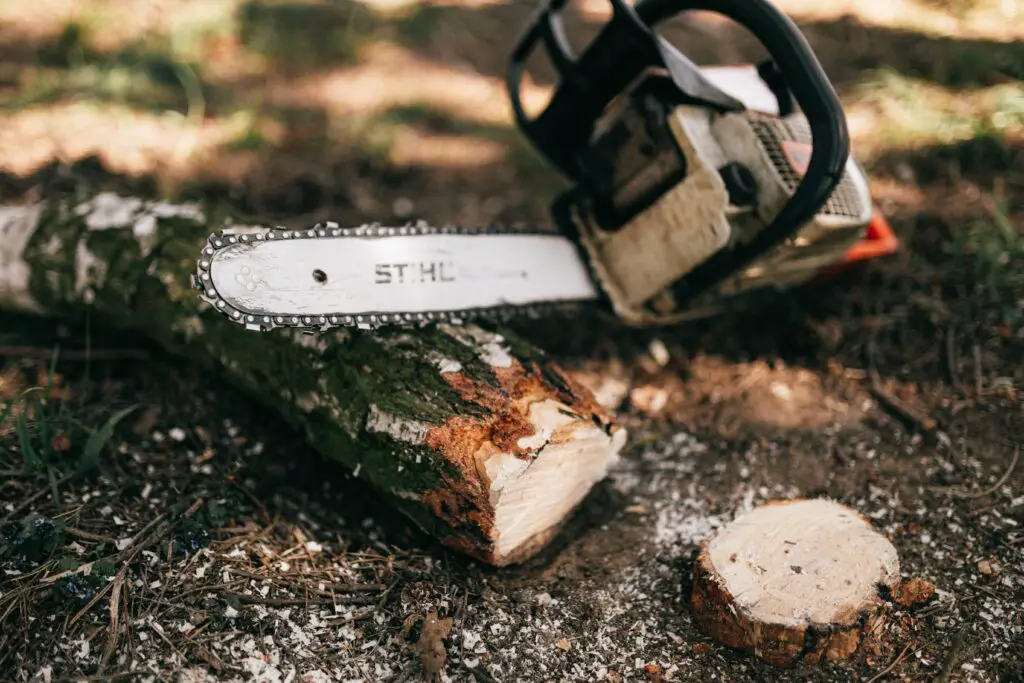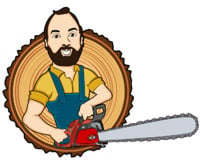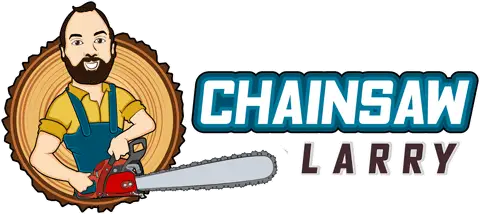Table of Contents
So your chainsaw won’t start?
Searching for answers on how to fix it?
If so, this guide should help.
Below I’ll go over the 10 most common reasons why your chainsaw might not be starting.
Hopefully, this guide will also help you prevent these problems from happening.
If after you’ve found the solution to why your chainsaw isn’t starting, you’d like to learn how to get your chainsaw running like new, be sure to check out my article How To Clean A Chainsaw.
Let’s get into it!

What to Look For When Checking For Problems
In any case, where your chainsaw won’t start, you should begin by identifying the most basic issue, then eliminate each possible cause one by one until you figure out what is wrong.
1. Clogged Carburettor
The thick residue left in the chainsaw carburettor is the result of leaving fuel in the tank too long, which can clog it. Almost any small engine can have this problem. There is a good chance that your carburettor is blocked if you find thick residue inside of it.
Solution: To unclog, clean out old fuel residue and replace it with new fuel. Also, add a fuel stabilizer to help maintain the quality of the fuel. You’ll also want to try to use a carburettor cleaner to help to resolve the clog.
Try starting the chainsaw after you’ve filled the tank with fresh fuel mixed with the fuel additive and cleaned the carburettor with the carburettor cleaner. If this doesn’t work, you’ll most likely need to rebuild the carburettor or replace it with a new one.
Prevention: Clean out the old fuel and add fresh fuel every time.
2. Spark Plug Check
An old, dirty, damaged or improperly attached sparkplug can cause hindrance, and the chainsaw won’t start.
Solution: Inspect the porcelain insulator and electrode on the spark plug for any damage and wear, such as cracks and burns. Check for excessive carbon build-up as well. Additionally, you can use an ignition test to see if the spark plug is causing the problem. It can determine whether or not the spark plug is defective. If so, you’ll need to replace your spark plug.
Prevention: It’s recommended to replace your chainsaws spark plug once per year to avoid these problems.
3. Check the engine for flooding
It could be possible that you have flooded the engine if you pressed the primer bulb too many times or you’ve filled your fuel tank too high – smelling gasoline may be an indication that this happened and could be the reason your chainsaw won’t start.
Solution: Drain the fuel from the engine, then you’ll want to help evaporate some more of the excess fuel by letting it run idle for about 15 minutes.
Prevention: Make sure you’re reading your chainsaws’ manufacturers instructions for how much fuel should be put in your chainsaws fuel tank. Be sure not to exceed that amount.
4. Air filters should be checked
In the event of a dirty or clogged air filter, the engine won’t get the air needed for combustion, and as a result, the chainsaw won’t start.
Solution: Clean out or replace the air filter.
Prevention: Regular maintenance on your chainsaw will ensure the air filter doesn’t have an excessive build-up of dirt or other particles. Make sure you’re routinely cleaning your air filter and replacing it when needed.
5. How Cold Is It?
One of the most common reasons a chainsaw wouldn’t be starting up is due to the cold weather. When not in use and the temperature drops, it can be difficult for your chainsaw to want to start.
Solution: You may need to give your chainsaw a little more choke and pull it out as much as possible. Most of the time, this will help.
Prevention: Not much you can do here when the temperature drops or you live in a colder climate. It’s a typical problem that you can fix with patience and a little more choke.
6. Ignition Coil
In the absence of a cause after checking everything above, the ignition coil is the next possibility to consider.
A well-working ignition coil is crucial for your chainsaw to operate. The voltage must be applied to the sparkplug. Without this, the sparkplug will not spark, and the chainsaw won’t start.
Solution: You’ll have to use a multimeter or an ignition coil tester to check if the issue is related to the ignition coil. If this is the cause of your chainsaw failing to start, your only option is to replace the ignition coil.
Prevention: Keeping your spark plugs in good condition will reduce the chances of your ignition coil failing.
7. Rewind Spring
A broken rewind spring could also be a potential reason your chainsaw won’t start. The rewind spring is what rewinds the starter cord after each pull, and If the spring breaks, your chainsaw will not be able to start.
Solution: The normal wear and tear of using your chainsaw can cause this, or it could just be stuck. You can check if this is the cause by opening up the recoil starter and taking out the rewind spring to see which it is.
If the rewind spring is broken and your starter cord does not wind back in after pulling it, you will need to replace the spring. With some models, it may be necessary to replace the entire recoil starter assembly and in most cases, this is the easier option.
Prevention: Make sure to always correct the pulley cord when you feel there’s a problem instead of continuing to keep pulling at it. Make sure the cord is working correctly to avoid the spring getting stuck. Regular chainsaw maintenance and proper chainsaw use should prevent this problem.
8. Recoil Starter Assembly
Pulling the starter cord won’t start the engine if your recoil starter is defective. It is important to check this step if none of the reasons above appears to be the cause of the problem.
Checking requires you to take out the entire recoil starter assembly. Upon pulling the cord, the tabs attached to the pulley and cam should extend, grabbing the hub of the engine, which should turn it to make the engine start. As you release the cord, the tabs should retract, pulling the cord back into your case.
Solution: Unfortunately, if you release it and the tabs don’t retract, then you’ll have to replace the recoil starter.
Prevention: From time to time, it’s beneficial to see if the cord on your recoil starter needs tightening for more tension if it’s caught, and it’s essential to also check for any wear and tear the recoil starter may have.
9. Blocked Spark Arrestor
Spark arrestors are screens that prevent sparks from flying out of chainsaws while being used, and they affect both the fuel-air mixture and spark prevention.
Also, it is vital to maintain this regularly as it can be blocked over time, and this will prevent exhaust from leaving the motor, and your chainsaw won’t start. The screen needs to be cleaned routinely.
Solutions: Remove the screen and carefully use a soft brush and carburettor cleaning fluid to clean, gentle enough to not cause the screen any damage. If the screen is damaged, you’ll have to replace it.
Prevention: Make cleaning your spark arrestor part of your routine chainsaw maintenance.
10. Recoil Starter Pulley
The recoil starter pulley retracts the starter rope back into place when it’s not being used. Sometimes the recoil pulley can get stuck, or it can break.
Solution: Check to see if the recoil pulley is stuck. If so, try to find where it is stuck and regain tension, so it recoils back into place. If it is broken, you’ll have to replace it.
Prevention: Always check that the recoil starter pulley retracts. If it doesn’t, don’t continue to pull as it could cause more damage if stuck. Routine maintenance will also help to know that all the parts of your chainsaw are working correctly.
So there are the 10 most common reasons why your chainsaw won’t work. I hope I was able to help you identify the problem and come up with a solution.
The best way to prevent any causes of your chainsaw not working would be routine maintenance. It’s essential to clean out your machine and make sure everything is in working order so that you can have a chainsaw that can last you years.
For even tips for fixing your chainsaw, read my guide Chainsaw Troubleshooting Tips.
I hope you enjoyed this guide.
Happy sawing!

Your pal,
Chainsaw Larry

